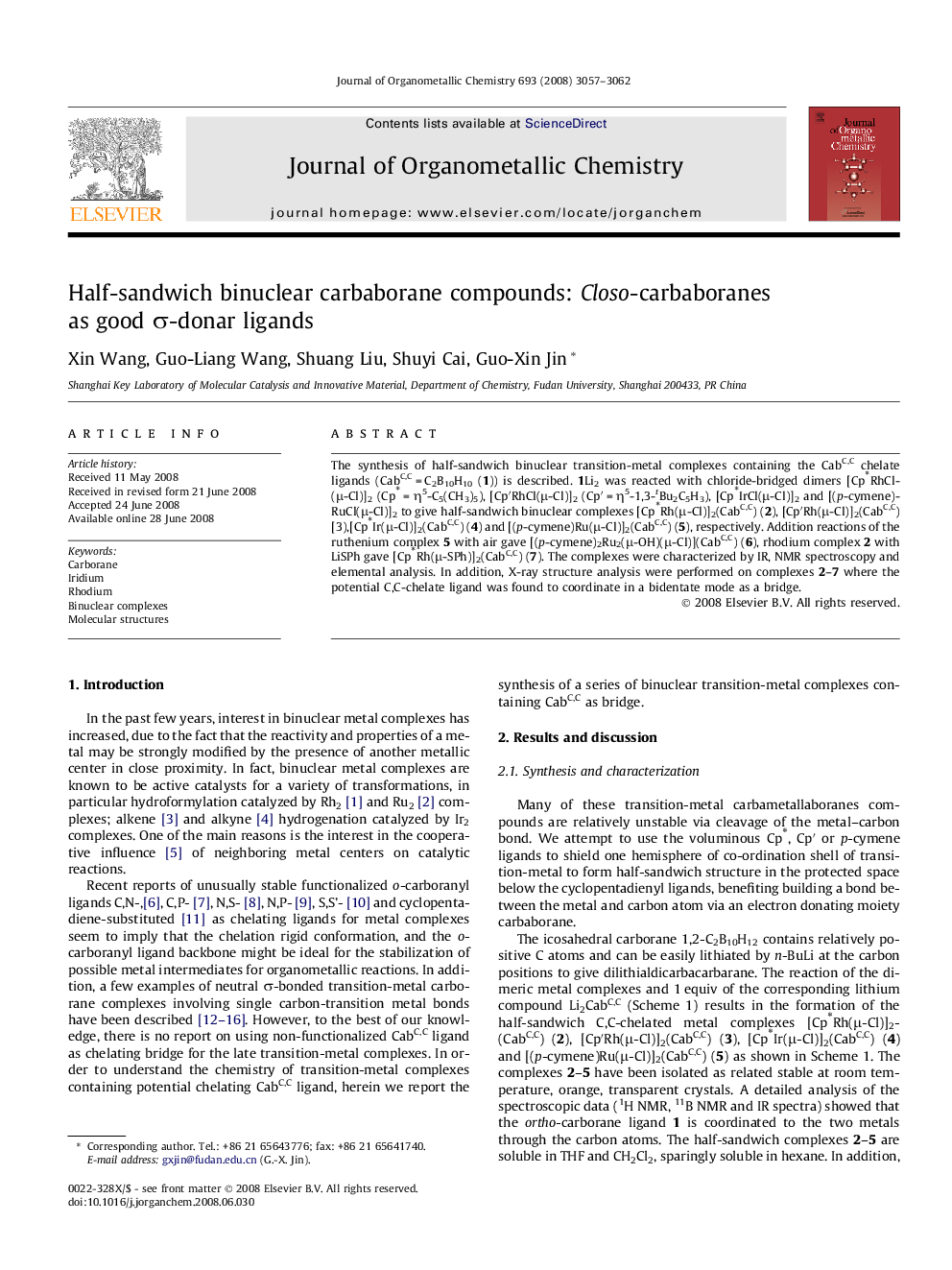| Article ID | Journal | Published Year | Pages | File Type |
|---|---|---|---|---|
| 1327001 | Journal of Organometallic Chemistry | 2008 | 6 Pages |
The synthesis of half-sandwich binuclear transition-metal complexes containing the CabC,C chelate ligands (CabC,C = C2B10H10 (1)) is described. 1Li2 was reacted with chloride-bridged dimers [Cp∗RhCl(μ-Cl)]2 (Cp∗ = η5-C5(CH3)5), [Cp′RhCl(μ-Cl)]2 (Cp′ = η5-1,3-tBu2C5H3), [Cp∗IrCl(μ-Cl)]2 and [(p-cymene)RuCl(μ-Cl)]2 to give half-sandwich binuclear complexes [Cp∗Rh(μ-Cl)]2(CabC,C) (2), [Cp′Rh(μ-Cl)]2(CabC,C) [3),[Cp∗Ir(μ-Cl)]2(CabC,C) (4) and [(p-cymene)Ru(μ-Cl)]2(CabC,C) (5), respectively. Addition reactions of the ruthenium complex 5 with air gave [(p-cymene)2Ru2(μ-OH)(μ-Cl)](CabC,C) (6), rhodium complex 2 with LiSPh gave [Cp∗Rh(μ-SPh)]2(CabC,C) (7). The complexes were characterized by IR, NMR spectroscopy and elemental analysis. In addition, X-ray structure analysis were performed on complexes 2–7 where the potential C,C-chelate ligand was found to coordinate in a bidentate mode as a bridge.
Graphical abstractBinuclear half-sandwich iridium, rhodium and ruthenium complexes containing CabC,C as bidentate bridging ligand have been synthesized and characterized structurally.Figure optionsDownload full-size imageDownload as PowerPoint slide
